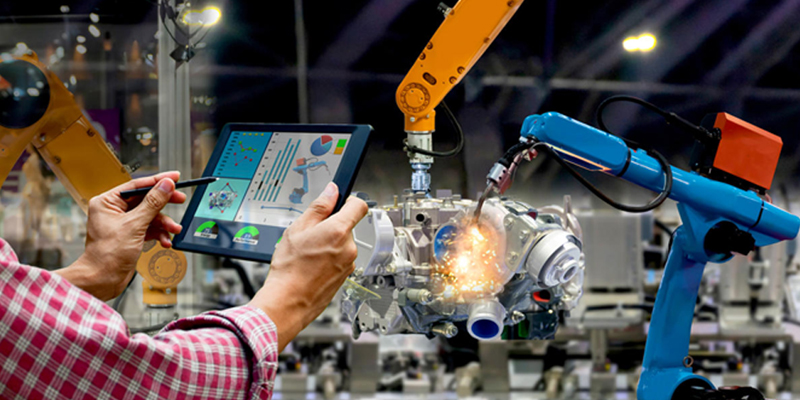The majority of respondents (97%) also felt that their workplace would be greatly improved by an increase in the use of technology. In addition, 64% of respondents reported feeling that their company would fall behind the competition if new technology were not implemented. The same portion (64%) also reported feeling that advances in technology are quickly rendering the traditional office obsolete. This study reveals something of a double-edged sword that businesses face.
While a lack of technology itself may or may not cause a business to fall behind the competition, the perception that it can cause them to lose out on the best talent. That, in turn, can cause them to fall far behind competitors that can attract better talent.
Not only can smart tech help you attract better talent, it can help them be more productive and even create a safer work environment. Here are some ways to use smart tech to increase employee motivation.
Unleash the Full Human Potential
Employees who identified as “Digital Revolutionaries” – those that worked in environments where advanced tech is in widespread use – were 51% more likely to have strong job satisfaction than those that identified as “digital laggards.” In addition, they were also 43% more likely to respond positively to questions about their work-life balance, 83% more likely to praise their company’s vision and 56% more likely to say they are motivated at work.
While there has long been a fear that robots or electronics are taking away human jobs, nothing could be further from the truth. Instead, Artificial Intelligence is growing more and more capable of taking on routine tasks that do not require human ingenuity to perform.
Automating routine tasks frees up employees to perform work they find more meaningful. In the auto industry, for example, as robots take on more and more of the work of assembling cars, this frees up car manufacturers to hire more designers and engineers to invent better, safer, more reliable cars that make a lower impact on the environment.

Enable Advanced Employee Training and Development
65% of Revolutionaries reported they had seen professional development and growth through the use of digital technology, compared to just 31% of Laggards.
Training and development is just one of the many ways in which businesses can employ smart technology to help create not only a better workplace environment but better employees as well. Smart gamification, in particular, is gaining traction as a means of creating a swifter learning process that results in greater learning retention as well as improved behavior modification. A recent survey conducted by the Aberdeen Group revealed that organizations that practice gamification showed a 48% improvement in employee engagement and a 36% decrease in employee turnover.
Increase Employee Productivity using Big Data
73% of Digital Revolutionaries reported a positive impact on their productivity thanks to digital technologies, vs. 55% of laggards.
Even the smallest of businesses now have access to an almost unprecedented amount of data regarding employee performance, timelines, attendance, productivity, and behavioral responses. With the help of advanced analytics they now even have a way of processing all that data into actual actionable intelligence.
This intelligence can, in turn, help employers create the best environment to foster the highest productivity from their employees. By tracking and monitoring productivity, you can design better training curriculum and more personalized systems that can actually cater to the individual needs of your employees. This creates a better work environment for them that can lead to both higher productivity and far greater job satisfaction.
Foster Effective Team Collaboration and Communication
Most respondents thought digital technology would result in a more efficient (56%), more collaborative (52%) and more appealing (57%) work environment.

Perhaps one of the biggest perks that technology has brought to the workplace is the opportunity for employees to work remotely. According to a PGi Telework Week survey, 82% of workers who ‘telecommute’ experience less stress, while 80% have higher morale, and 69% missed fewer days of work.
File sharing, cloud storage and cloud computing, in particular, are making it easier than ever for employees to collaborate from even the most remote locations. Project management tools like Asana and Basecamp are also helping businesses manage these remote teams better to help keep both employees and projects on track and moving forward.
Offer Better Workplace Experience
For decades, the philosophy surrounding business productivity has largely centered on the expectation that employees mold their lives around the needs of the company rather than the company flexing to meet the needs of their employees. It turns out, however, that happy employees are productive employees and employees whose work experience is more tailored to their personal needs are happier employees.
From scheduling software that allows businesses to provide more flexible hours to technology that provides telecommuting options and even video conferencing, which cuts out the need for a good deal of business travel, smart technology is giving businesses the opportunity to provide a far more customized experience for their employees.
In the workplace itself, smart technology is also allowing employees to better customize their experience as well. From fully customizable desks and workspaces to the use of wearables, it is helping businesses offer a better workplace experience. Fitness trackers, for example, can help employees remember to get up and stay active throughout the day. This, in turn, can help reduce stress, which can in turn help maintain a strong immune system. A stronger immune system can also help keep employees healthy during cold and flu season. Considering that the 2018 cold and flu season alone cost businesses an estimated $9 billion, helping employees lead happier, healthier lives is a win-win-win all the way around.
Smart tech can create a more enriching experience for employees, better job satisfaction and even better health. This cannot help but be a benefit to businesses. Overall, the evidence seems pretty clear that companies that keep pace with emerging tech are those most likely to be the industry leaders of the future.












Replies to This Discussion